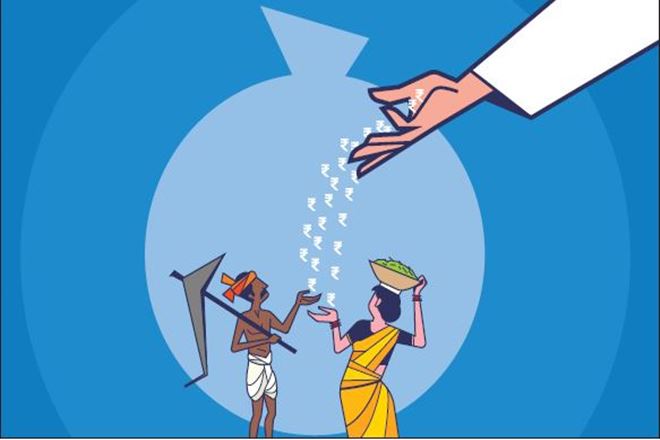Farmers are unlikely to be too overjoyed with the Rs6,000 per annum that will flow into their bank accounts, a move clearly aimed at wooing them ahead of the elections. Most agrarian experts say the NDA government has not addressed the rural distress in time.
The PM Kisan Samman Nidhi Yojana, a basic income scheme for farmers, envisages a Budget outlay of Rs75,000 crore for 2019-20, and will provide 12 crore small and marginal farmers an amount of Rs6,000 annually.

Farmers eligible for this benefit are those that have land holdings of 2 hectares or smaller. As the government plans to go ahead with the scheme at the earliest, it has budgeted Rs20,000 crore for 2018-19. “The idea is to acknowledge the role they are playing. This is being given to them as a mark of respect,” finance minister Piyush Goyal said.
The government has clarified the amount of Rs6,000 would be paid in addition to support in the form of MSPs (minimum support prices) already announced. Moreover, any farmer who meets the land-holding criterion would be eligible regardless of whether he has received a similar benefit from the state government.

While it has upset the fiscal math, finance minister Piyush Goyal said it has added 0.2% to the fiscal deficit both in 2018-19 and in 2019-20, this is clearly a big plank of the NDA’s election strategy.
The Rs6,000 a year, or Rs500 per month, is clearly not a big sum though one could argue any reprieve for small and marginal farmers would help. RBI data highlights the share of loans for this group fell to 40% in FY17 from 45% of total agriculture credit a decade ago, owing to non-payment and credit write-offs. To put things in perspective, taking the government’s poverty line of Rs32 and a family size of four, the total monthly requirement for a household is expected to be Rs3,840. Thus, the Rs500 credit works out to only 13% of the total monthly requirement. But states such as Telangana and Odisha have seen success with such schemes. It is the initial move towards a universal basic income. Moreover, loan waivers across the country have now totalled Rs1.9 lakh crore.
The sops for the farm sector do not end at the minimum basic income. In a move to provide supplemental income, the government also focused on the allied agricultural activities extending credit provisions and giving more credence to the animal husbandry and the fisheries sector. In addition to announcing an outlay of Rs750 crore and setting up of Rashtriya Kamdhenu Aayog to enhance the production and productivity of cows, it also extended interest subvention to farmers pursuing animal husbandry and fisheries through Kisan Credit Card scheme, with an additional 3% on timely repayment. With over 40 million accounts, an extension of KCC is expected to provide further access to formal finance.
Moreover, by raising the duration of interest subvention of 2% for farmers hit by natural calamities from one year to the entire period of loan duration and also raising the subvention limit to 5%, it has shown it can be very farmer-friendly. Given the extent of farm distress, fuelled by falling realisations for a host of crops, it was always expected the government would come up with a support scheme for farmers especially in an election year. More so, when it has promised to double farmers’ income by 2022.


